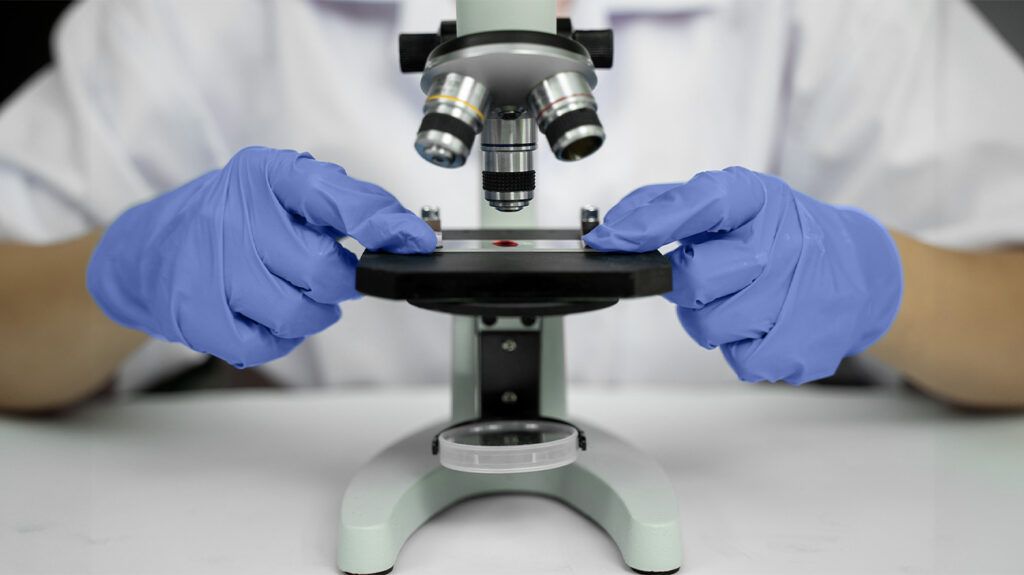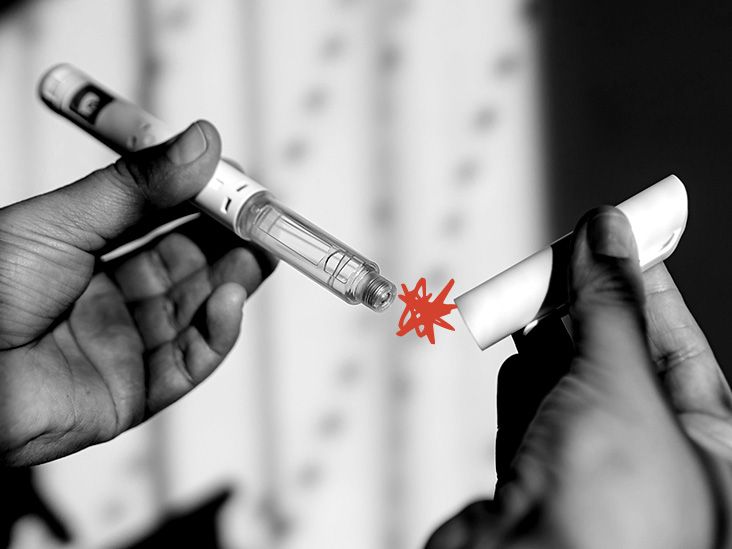Acute myeloid leukemia (AML) and chronic myeloid leukemia (CML) are cancers that originate from a type of white blood cell. AML features a rapid onset, and CML is slower to progress.
Leukemia is a blood cancer that is classified according to the type of cells that become malignant. For AML and CML, these cells are myeloid immune system cells.
Most of the body’s blood cells originate in a person’s bone marrow. They become either lymphoid stem cells or myeloid stem cells, then specialize even further into various types of immune system cells. Myeloid stem cells also create platelets and red blood cells.
Leukemia resources
Visit our dedicated hub for more research-backed information and in-depth resources on leukemia.

Though AML and CML are both cancers originating from myeloid immune system cells, there are several key differences between them:
| AML | CML |
|---|---|
| progresses quickly without treatment | progresses slowly |
| classified into subtypes | classified into stages |
| primary treatment is chemotherapy | primary treatment is targeted therapy |
| accounts for | comprises |
| might be caused by exposure to tobacco smoke | might be caused by high doses of radiation |
There are also similarities, such as their shared bone marrow origin. In addition, both AML and CML rarely affect children, with an average age at diagnosis around
- fatigue
- weight loss
- fever
- night sweats
- rash
- weakness
- bone pain
- abdominal swelling or fullness
- liver or spleen enlargement
- shortness of breath
- excess bleeding or bruising
- bleeding gums
- increased infection risk due to neutropenia (low neutrophil levels)
AML can also cause stroke-like symptoms due to blood vessel clogging known as leukostasis. Symptoms include:
- sleepiness
- slurred speech
- headache
- confusion
- weakness on one side of the body
- vision loss or changes
- shortness of breath
Act FAST for stroke symptomsLearning the acronym “FAST” is a good way to remember the symptoms of stroke. This can help a person seek prompt treatment. FAST stands for:
- Facial drooping: If the person tries to smile, does one side of their face droop?
- Arm weakness: If the person tries to raise both their arms, does one arm drift downward?
- Speech difficulty: If the person tries to repeat a simple phrase, is their speech slurred or unusual?
- Time to act: If any of these symptoms are occurring, contact 911 or local emergency services immediately.
AML occurs when a myeloid stem cell mutation causes the production of an excess of white blood cells. These white cells are not mature enough to fight infection.
As their numbers increase, the number of healthy platelets and red blood cells decreases, leading to leukemia symptoms.
About
- CEPBA
- FLT3
- NPM1
- RUNX1
There are several
- radiation exposure, such as from a previous cancer treatment
- previous chemotherapy
- tobacco use
- exposure to chemicals, such as benzene or formaldehyde
- genetic disorders, such as Fanconi anemia and Bloom syndrome
- blood disorders, such as myelodysplasia, polycythemia, or myelofibrosis
- advancing age
- being male
- family history
Research is ongoing to identify other potential AML causes.
Some types of exposures are the subject of ongoing research, but experts haven’t yet conclusively linked them to AML.
They include:
- electromagnetic fields
- diesel
- gasoline
- certain solvents and chemicals
- herbicides and pesticides
Some research suggests other potential contributing factors, such as chronic stress. An
CML occurs due to DNA changes. These changes occur during a person’s lifetime, rather than being acquired through inheritance.
According to the
This translocation involves an erroneous partial DNA exchange between chromosomes 9 and 22. It causes chromosome 22 to become shorter than usual.
Researchers have named this shortened chromosome the Philadelphia (Ph) chromosome. It is present in the leukemia cells of the vast majority of people living with CML.
There are a small number of people with CML who do not have the Ph chromosome. Instead, they have an oncogene (cancer-causing gene) known as BCR-ABL.
An even smaller subset of people with CML have neither the BCR-ABL oncogene nor the Ph chromosome. They may have unknown oncogenes or a condition other than CML.
Diagnosing
- Symptom assessment: Examples include the type and duration of symptoms a person has experienced.
- Medical history review: Disclosing any other health issues to a doctor can provide helpful information. Details about family history and other possible leukemia risk factors can also help.
- Physical examination: A doctor assesses a person’s nervous system, lymph nodes, spleen, liver, skin, eyes, and mouth. They also check for bruising, bleeding, and signs of infection.
- Blood test: Blood tests can provide information about a person’s blood cell numbers and blood chemistry. Doctors also perform DNA analysis to check for the Ph chromosome or the BCR-ABL gene found in CML.
- Bone marrow test: Doctors extract samples of bone marrow from the hip or another bone using a needle.
- Cerebral spinal fluid (CSF) test: A lumbar puncture, or spinal tap, can check for the spread of AML to the CSF. This test may not be performed if a person does not have symptoms that suggest their AML has spread to their brain or spinal cord.
- Imaging: Tumors are not present with leukemia. However, doctors can still use imaging to find signs of infection, inflammation in lymph nodes, and organ enlargement. Imaging can also assist doctors with needle biopsy procedures.
The
The chemotherapy medications and their combinations doctors use to treat AML depend on whether the disease is:
- newly diagnosed and untreated
- in remission
- recurrent/persistent
Chemotherapy may continue while the cancer is in remission, with the goal of deepening the treatment response and maintaining remission. This is known as consolidation chemotherapy.
In addition to chemotherapy medication, a person being treated for AML may receive the following, as needed:
- red blood cell transfusions
- platelet transfusions
- antimicrobial therapy
- prophylactic antibiotics
- growth factors
- bone marrow transplant
- stem cell transplant
- targeted therapy with tyrosine kinase inhibitors (TKIs)
- bone marrow transplant
- stem cell transplant
TKI use can result in an overall survival rate greater than
Leukemia prevention involves changing any controllable risk factors.
For
Radiation and chemotherapy treatments for previous cancers may cause AML. However, the importance of treating those cancers outweighs the small risk of developing leukemia in the future.
Avoiding occupational and environmental exposure to chemicals like benzene may also reduce the chance of AML.
The
The following are three frequently asked questions about AML and CML.
How do doctors distinguish AML vs. CML from looking at peripheral blood?
Doctors can tell whether leukemia is acute or chronic by assessing the number of blasts in a person’s bone marrow or peripheral blood smear.
Blasts are dysfunctional or immature cells that usually comprise
What is the most aggressive form of leukemia?
AML is considered to be one of the most aggressive forms of all cancers. Treatment should begin as soon as possible following diagnosis.
How do doctors differentiate CML blast crisis from AML?
Doctors can identify a CML blast crisis by testing for the presence of CML-specific gene mutations, such as the Ph chromosome. If no such mutations are present, the person may have AML instead of a CML blast crisis.
AML and CML are both types of leukemia that originate in myeloid blood cells. They have separate gene mutations and progress at different rates.
AML treatment primarily involves chemotherapy with additional support, such as blood transfusions included as needed. CML treatment centers around targeted therapy with TKIs and may also include bone marrow or stem cell transplants.


